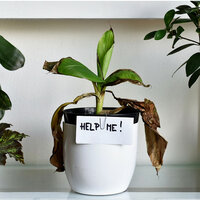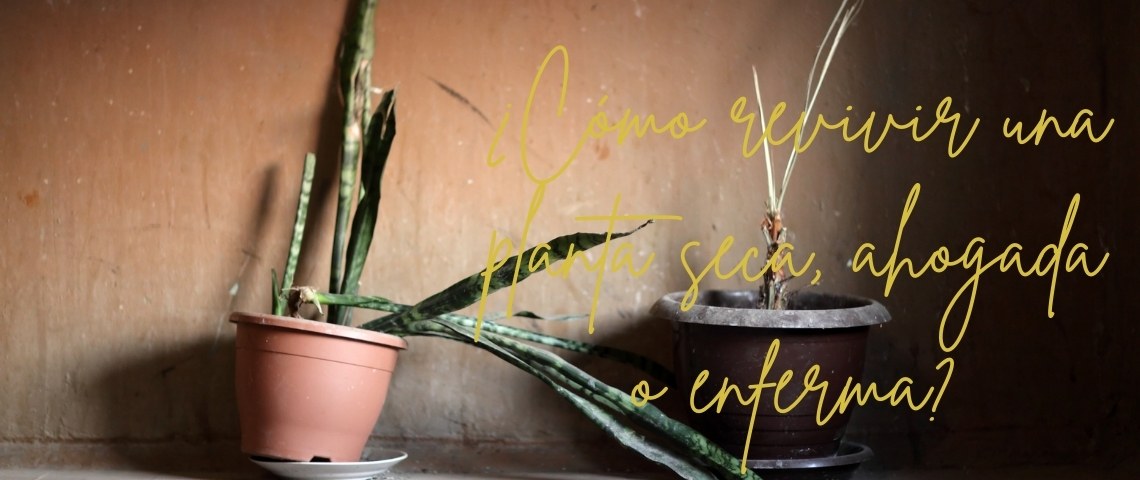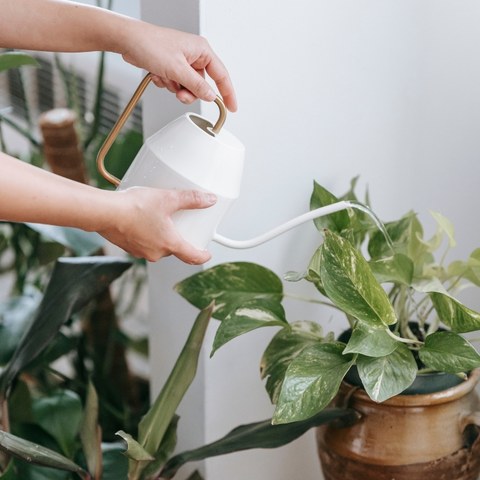-
How to revive a dried, drowned or diseased plant?

Are you frustrated with a plant that's on its last leg, and you're not sure how to revive it? Perhaps you've tried everything to save your almost-dead plant, but it's still struggling to recover. If you're reading this article, it's likely because you're facing a challenging situation with your plant, and you're looking for solutions to help it thrive again. Whether your plant is suffering from overwatering, underwatering, or another issue altogether, we'll provide you with practical tips on how to nurse your almost-dead plant back to health.
Fortunately, this is a situation that can be easily prevented, and it doesn't necessarily mean the end of your plants. If you've come home to find your plants dry and wilted, don't panic - it's likely due to a lack of water or another factor. In this article, we'll provide you with a step-by-step guide on how to revive your plants and get them back to their healthy state.
introduction
Many of us have had a favourite plant that we loved dearly and in the end it has died. This happens especially when we leave them unattended for long periods of time. The fact is that the plants we have in the house, garden or office are also living beings that require our attention to continue living, just like pets.

recommendations for recovering your almost dead plants
Plants can die from a variety of factors, whether from over-watering, under-watering or disease. If you have been away from home for two weeks, have not watered your indoor plants and they are exposed to the sun, it is very likely that they will not last long. The same goes for outdoor plants, if it has not rained enough some of them may look like sad plants with drooping leaves.
How to revive a dry plant?
- Remove all stems and withered leaves. If the dehydration was very severe, pruning should be more intense, don't be afraid, this step is very important so that the plant can use the little strength it has left in the areas that are still healthy because it is useless to keep sending nutrients to the dead areas as it will never recover. And remember to always disinfect pruning tools, otherwise it could be counterproductive for your plant.
- First check that it has not been attacked by a pest. After this, carefully remove the surface layer of the substrate, as this layer tends to harden and does not allow water to pass through when watering.
- When you have removed the top layer, remove the root ball (root ball: soil or substrate that surrounds the roots of a plant) from your pot or the soil very carefully, without damaging the roots in the process.
- Once the root ball has been removed, soak it in lukewarm water for at least 10 minutes to rehydrate the plant. It is important that the water is really warm as this allows better penetration through the substrate.
- Drain the excess water from the root ball into a saucer and then transplant it into a pot with new substrate.
- Place the plant in a well-lit place but not in direct sunlight.
It is important to mention that these recommendations to save your almost-dead plant from drying out may only work the first time, if it happens again on another occasion it will be very difficult for it to survive.

How to save a drowned plant?
If you have overwatered your plant, either because it is a species that does not tolerate a lot of watering or because the pot does not have adequate drainage, it is a similar situation to not having watered it for a while. You will notice this because the plant has dry leaves and yellowing tips. To recover a drowned plant, follow the recommendations below:
- Remove the root ball from the plant as above, but with much more care, as a choked plant can break more easily. You will have to be very careful with the stems and especially with the roots. Tap the sides of the pot to loosen the roots from the edges. Once the root ball has been removed, clean it carefully from the soil, without getting it wet, to free the roots from the damp soil.
- Una vez extraído el cepellón limpialo bien de la tierra con mucho cuidado, sin mojarla para así liberar las raíces de la tierra húmeda.
- Once the plant is free of wet soil, wrap it in absorbent paper and leave it to rest for a whole day. If you see that the paper becomes too soggy, you should replace it with a dry one.
- Once the day has passed, prune the rotten roots (those that are too brown) and replant your plant without watering it in about 3 days.
To avoid future problems either due to over or under watering, it is important that you research the watering requirements of the plant species you have in your home or office.
How to recover a diseased plant?
Generally plants can get sick from two main causes: fungi or pests. Depending on the type of affliction your plant has, you should treat them with different home remedies to save your sick plant.
- Saving a plant with fungus. This technique is very complicated but always worth a try. First you must eliminate the problem that has caused the fungus, such as excess humidity, and then treat your plant. To do this you must clean the leaves, remove the root ball and carefully clean the roots. Change the pot and substrate completely, taking extreme care with your plant. You can use home-made fungicides when completely changing the pot and substrate.
- Saving a plant with pests. Pests are easier to treat than fungi, and once identified and removed from its leaves and stems the plant will start to recover immediately, whether it is aphids or mealybugs (to treat mealybugs or learn more about them you can access our article on mealybugs on plants). What you should do is prune all the dry parts of the plant and leave it in a well-lit area, not in direct sunlight, and be very careful with watering and fertilizers. Finally, you can add a homemade insecticide.
plant care!
Now that we have provided you with information and advice about saving your plant(s), you will know how to act in these cases. It is important that we know our plants, that we inspect them regularly so that we can act quickly if we detect any abnormalities. As the seasons change, the circumstances in which plants grow also change. You will have to adapt the watering, the frequency of watering, which after all is the vital key to keeping your plants happy.
As you might have gased at the lifeless remains of your once-thriving plant, you couldn't help it an visited this article. It's good to know that we are also an online grower with a wide range of farm fresh houseplants and outdoor plants. Here's the place to find a new addition to brighten up your space. With a newfound sense of determination, you will select a vibrant, healthy plant.
Your plants will thank you if you treat them with care, water them, nourish them and also inspect them to see that everything is going well.
No comments found.